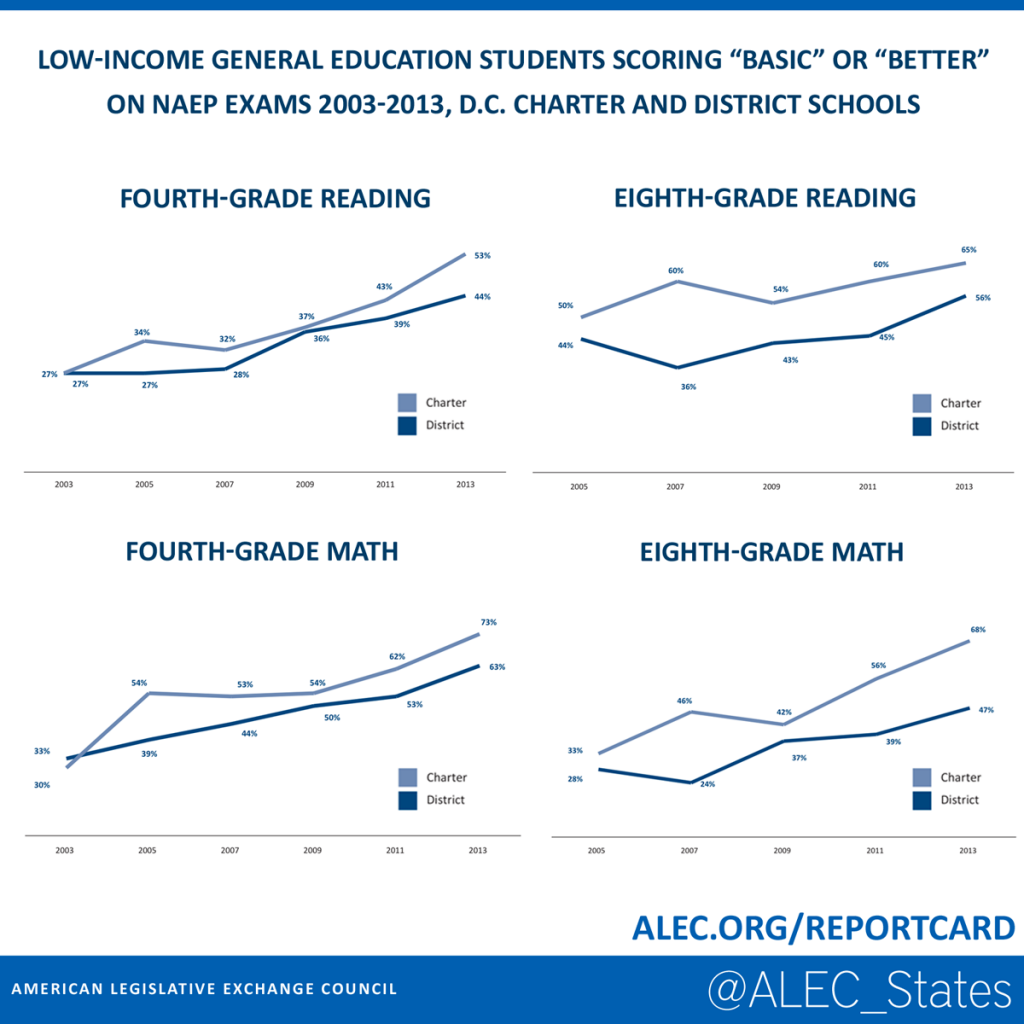Data Show School Choice Works
In November, the American Legislative Exchange Council (ALEC) released the annual Report Card on American Education tracking state education performance and progress over time. The results point out the variety in approaches to education across the country, and reveal that some states and school systems in America have done a much better job in rising to the challenge of the 21st Century than others.
The Program for International Student Assessment (PISA) reveals American schools as world leaders in spending per pupil but underachievers in student academic achievement. American academic performance has improved over time, but only at a rate close to the international average, leaving our relative position stagnant. The national average, however, conceals a great deal of variation between American states and jurisdictions—some of which have raced ahead while others have trailed behind. Using data from the National Assessment of Educational Progress (NAEP), which tests a representative sample of students in Reading and Mathematics in all 50 states, it becomes clear that while some states are showing significant gains in students’ progress, other states are failing to match those improvements.
The District of Columbia has shown considerable academic progress through school choice and other education reforms. While the scores in D.C. schools continue to improve, there is always opportunity for further improvement. The District has embraced some of the most vigorous K-12 reforms since the mid-1990s and currently 44 percent of D.C. school children now attend public charter schools. Additionally, teacher pay and retention policies have been modernized. If the United States had shown the same amount of progress shown by D.C. since the early 1990s, we would have largely closed the gap with many high performing nations.
On the flipside, there’s The Mountain State, West Virginia. In the ten years since No Child Left Behind mandated state participation in the NAEP, West Virginia has seen minimal improvement in its NAEP scores for low-income students. In 2013, 34 percent of low-income students scored below a basic-level score in 4th Grade Reading, and 37 percent were below basic in 8th Grade Math. In terms of state-level education policies, Michigan’s overall policy grade has been slipping for several years.
So what’s the difference between states who make it and those that don’t? Two words: School Choice. According to National School Choice Week, (Jan. 25-31), school choice is the empowerment of parents to choose the best educational environments for their children – from traditional public schools, charter and magnet schools, private institutions, online learning, and homeschooling. Using our previous examples, ALEC gives D.C. a “B-“ ranking for its education policy. That is compared to West Virginia’s “C-” grade.
American public education has never performed better than it does now, but unfortunately the improvement has not been strong nor widespread enough to close the gap with our competitors. The deep gap between our best performing students in America and the world remains deeply troubling. We have seen some progress in the last decade, but our students need and deserve much better education policy, beginning with school choice.

